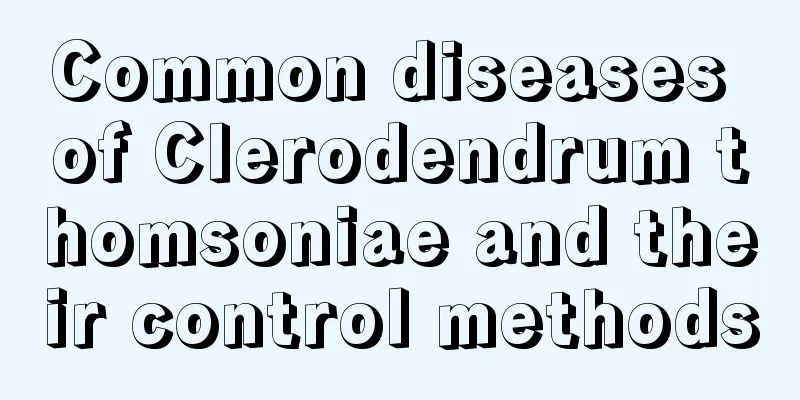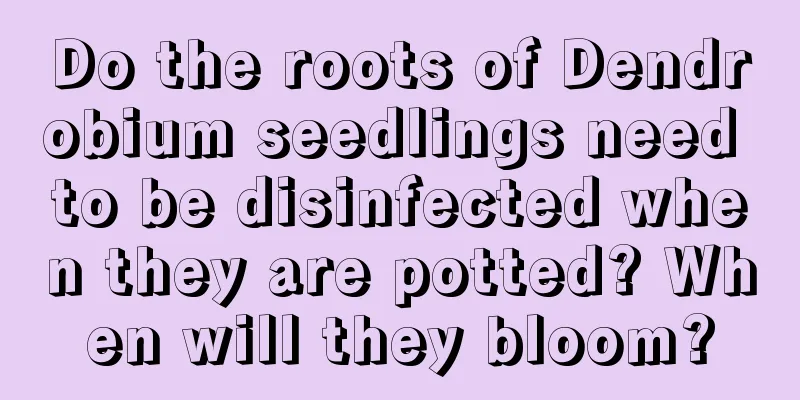Common diseases of Clerodendrum thomsoniae and their control methods

Common diseases of Clerodendrum thomsoniae: leaf spotSymptomsThe Verbenaceae plant belongs to the Verbenaceae family and can develop leaf spot disease, which is caused by infection with Ascomycetes. At first there are just small brown spots. If not treated in time, large black spots will appear, and the leaves will turn yellow and die. Prevention and treatment methodsOnce the disease is discovered, you should immediately spray the leaves with 800 times diluted Benomyl, once every 7-8 days, for 2-3 times in a row, and the plant can be basically cured. Common diseases of Clerodendrum thomsoniae: rustSymptomsRust fungi generally only cause local infection. The affected parts may produce small blisters or blister-like, cup-shaped, or hair-like objects of different colors due to the accumulation of spores. Some may also cause tumors, rough bark, bushy branches, bent branches and other symptoms on the branches and trunks, or cause leaf fall, burnt tips, poor growth, etc. In severe cases, the spores accumulate in dense patches and the plants quickly die due to the evaporation of a large amount of water in the body. Prevention and treatment methods400 times diluted 70% mancozeb wettable powder and 700 times diluted 75% thiophanate-methyl wettable powder can effectively prevent and control rust disease of Ampelopsis thomsoniae. Common diseases of Clerodendrum thomsoniae: mosaic diseaseSymptomsIn the early stage of the disease, chlorotic angular spots appear on the leaves, which eventually turn brown; the diseased leaves show mosaic of light green and evergreen; in severe cases, the leaves become deformed and yellow, the plants become short, the flower spikes are short, the flowers are small and few, or even flower spikes cannot be produced. Prevention and treatment methodsRemove leaves infected by mosaic disease bacteria and then use pesticides for prevention and control. The pesticide can be sprayed with 2500 times diluted 50% benomyl wettable powder for prevention and control. Common diseases of Clerodendrum thomsoniae: Botrytis cinereaSymptomsIt can harm the stems, leaves and flowers of the plant, mainly the flowers. Pathogens invade through weakened host tissues. The leaves are affected, often first at the tip or edge of the leaves. In the early stage of the disease, water-like spots appear on the diseased part, which gradually expand and the diseased tissue turns black-brown and rots. Prevention and treatment methodsRemove diseased flowers and leaves promptly and burn them in a concentrated manner to reduce the source of infection. The greenhouse should be well ventilated, watering should not be excessive, and the indoor temperature and humidity should be controlled. In the early stage of the disease, you can use 800-1000 times diluted 70% thiophanate-methyl wettable powder or 800-1000 times diluted 50% carbendazim wettable powder for spraying for prevention and control. Spray once a week, for 2 to 3 times in a row. |
<<: Common diseases of monkey orchid and their control methods
>>: Common diseases and pests of poppy and their control methods
Recommend
How long does the fire festival last?
Fire Festival Fupen Time If Huo Jie adopted the m...
How to grow large-flowered cymbidium (home-growing method)
1. Maintenance methods 1. Light: Large-flowered C...
What flowers are suitable for growing in Yongzhou? What are the city flowers and trees?
1. Climate characteristics of Yongzhou Yongzhou h...
Functions and effects of Bidens pilosa
1. Function Unlike other plants, Bidens pilosa co...
The difference between Qingli and Huangli
1. Difference of blades Qingli is a hybrid variet...
How to grow mimosa on the balcony and what to pay attention to
1. Plenty of sunlight Mimosa is a plant that love...
The language and legend of myrtle
The Flower Language of Myrtle The flower language...
How to care for Dendrobium in winter
Is Dendrobium afraid of freezing? The suitable te...
Can green radish be watered with Coca-Cola? What are the benefits of watering green radish with Coca-Cola?
Can the green radish be watered with Coke? You ca...
What plants to plant on water-absorbing rocks
1. Moss Water-absorbing stone is a stone that abs...
Does Pinus chinensis prefer shade or sun?
Does Pinus chinensis prefer shade or sun? Fragran...
What fertilizer is good for radish?
Overview of black pine fertilization If you want ...
How to propagate Chlorophytum comosum
Cutting method Chlorophytum comosum is a very lov...
How to treat pig hind limb paralysis in summer?
The high temperature and high humidity in summer ...
Cultivation methods and precautions of green plum bonsai
Green plum bonsai is not difficult to grow. As lo...









